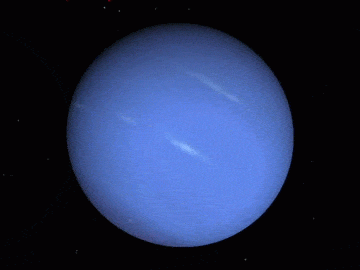The Sun
 |
| [1] The Sun |
As the host star of the solar system, the Sun plays a vital role in "keeping everything from the biggest planets to the smallest particles of debris in orbit" [2]. With the the star being 4.6 billion years old and having an average mass 333,060 times larger than our Earth, it is safe to say that this yellow dwarf is incredibly big. Surprisingly, this star isn't the hottest star that we know of with the Suns average temperature ranging between one million to ten million degrees celsius and is therefore much less than other stars (mostly blue and white stars) which are known to be increasingly higher. The wind like flames coming out of the sun as seen in the picture above [1] are electric currents which generate "a stream of electrically charged gas blowing outward from the sun in all directions" [2] and is scientifically referred to as a 'solar wind' or 'solar storm' and can have an effect on all planets. For earth however, our atmosphere acts as a barrier to these solar winds/storms and prevents high radiation levels from entering our atmosphere but these solar winds do give us from time to time the famous "Aurora Borealis (the northern lights) at the north pole and the Aurora Australis (the southern lights)" [3] which is explained in the video below.
[4] NASA explaining the cause of aurora's
So what is the sun made of? Well "as a star, the sun is a ball of gas (92.1% percent hydrogen and 7.8% helium) held together by its own gravity" [2] which fuse together to create an immerse amount of energy that replicates fire. The star is "so hot that most of the gas is actually plasma, the fourth state of matter...and can escape from the suns gravity and fly away, out in space" which is then referred to as a 'solar wind/storm' [5]. Another feature to consider about this star is the dark sunspots that sometimes appear from time to time on the suns surface. These dark sunspots appear on the surface of the star due to being much cooler than the rest of the sun which is caused by built up magnetic fields which are "so strong that they keep some of the heat within the Sun from reaching the surface" [6] and thus prevent that particular area from reaching the same temperatures as the rest of the sun. Overall, making 99.8% of our solar system, the sun is both an incredibly big and important star that keeps our solar system together and is expected to continue this for at least another five billion years until it runs out of hydrogen. After then, the sun will begin to expand into what is known as a red giant and become so big that it may engulf earth in the process before eventually shrinking into a white star (only slightly bigger than earth) and no longer be able to shine.
References
[1] clipart-library.com. [n.d.]. rotating sun gif. [Online] Available at: http://clipart-library.com/clipart/8i65qzR5T.htm [Last Accessed 09/10/2020].
[2] solarsystem.nasa.gov. [2019]. Sun. [Online] Available at: https://solarsystem.nasa.gov/solar-system/sun/overview/ [Last Accessed 09/10/2020].
[3] sciencing.com. [2017]. How Do Solar Winds Affect the Earth?. [Online] Available at: https://sciencing.com/solar-winds-affect-earth-4566990.html
[4] NASA Video. [2013]. Space Weather and Earth's Aurora. [Online] Available at: https://www.youtube.com/watch?v=HJfy8acFaOg [Last Accessed 09/10/2020].
[5] nasa.gov. (2006). NASA - Sun-Earth Connection. [Online] Available at: https://www.nasa.gov/mission_pages/themis/auroras/sun_earth_connect.html [Last Accessed 09/10/2020].
[6] spaceplace.nasa.gov. (2019). Sunspots and Solar Flares. [Online] Available at: https://spaceplace.nasa.gov/solar-activity/en/#:~:text=Sunspots%20are%20areas%20that%20appear,magnetic%20field%20lines%20near%20sunspots. [Last Accessed 09/10/2020].


Interesting stuff
ReplyDelete